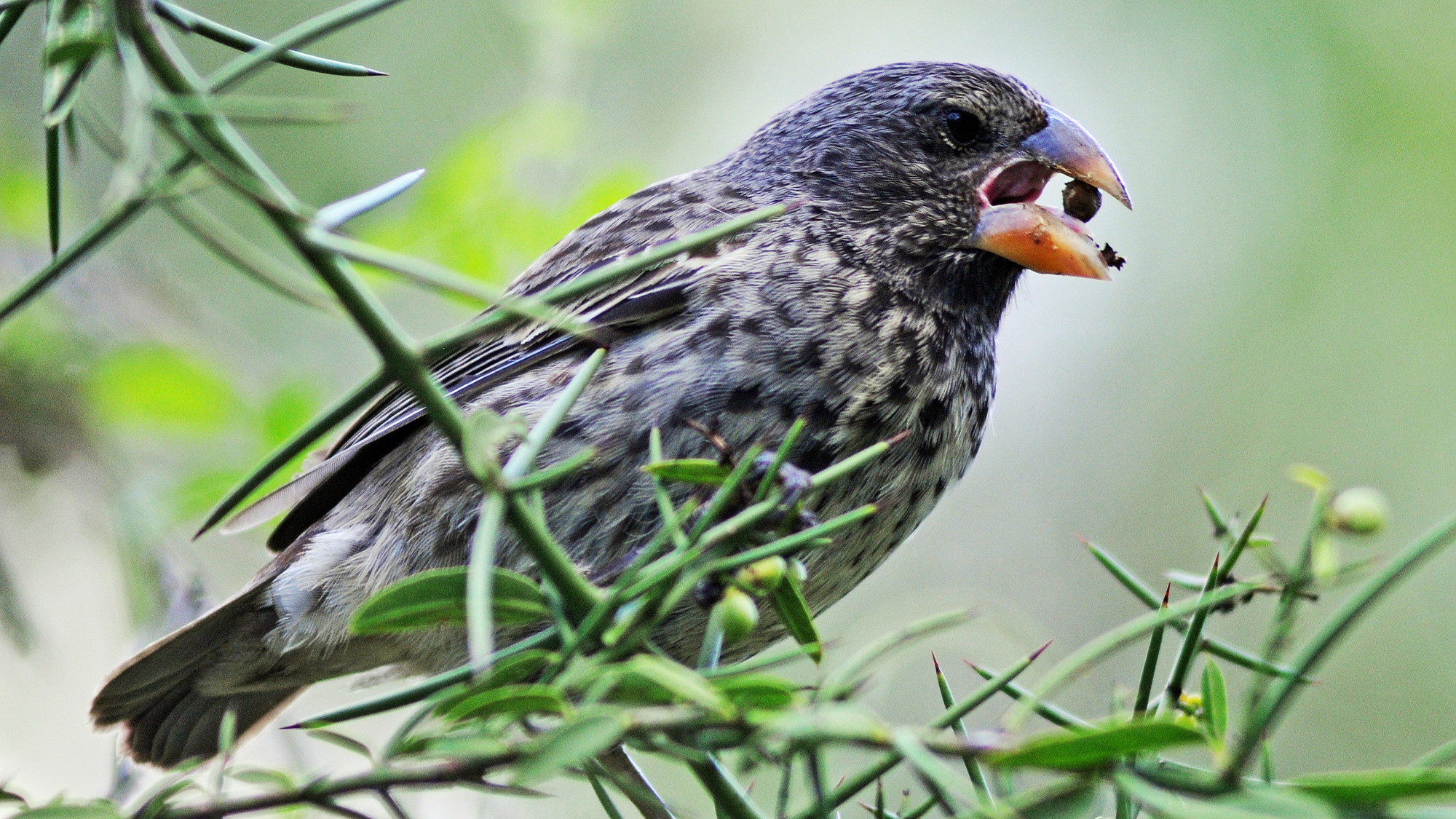The finches that call Ecuador’s Galápagos Islands home are biological rock stars, as they provided a key piece of evidence for Charles Darwin’s theory of evolution. One reason for this is how new finch species emerge in response to ecological change fairly quickly, called the theory of ecological speciation.
Now, scientists have identified a key connection between ecology and speciation using one of their signature traits–songs. A major ecological change like drought can alter their songs so much that other finches won’t respond. The findings are described in a study published October 10 in the journal Science.
Earlier studies on finches established that their beaks adapt to changes in their ecological environments, including habitat loss and drought. As their beaks change, the way that they sing is also affected. Those beak-driven changes to their songs can impact how specieses recognize one another and drive their separation, according to the study.
[Related: Thanks to a matriarchal gene, this bird can trick others into caring for its eggs.]
Since Darwin’s finches use songs to attract mates, the song changes related to beak evolution could be a catalyst behind ecological speciation. However, speciation is a historical process that takes place over a long period of time. This makes it a bit difficult to really document.
To try and watch speciation in action, a team of scientists devised an experimental study that used computer simulations and some field data on the birds taken over several decades. Earlier studies showed that finch beaks can either evolve powerfully to crush hard seeds or they can stay more delicate. These softer beaks allow them to make faster movements needed to produce a more elaborate song.
“It takes serious motor performance to sing an intricate song, like that of the swamp sparrow. And a big, powerful beak is just too clunky to manage the movements required,” study co-author and University of Massachusetts Amherst biologist Jeffrey Podos said in a statement.
The mating song of a male Darwin’s medium ground finch. CREDIT: Audio–Jeff Podos. Image–Andrew Hendry.
Using decades worth of quantitative research on the changes that the beaks of Darwin’s finches undergo due to various environmental changes, the team modeled how beaks would likely change into the future. They chose drought as the ecological driver for this experiment. Drought conditions tend to select for thicker-beaked finches. Using this data, they could predict and simulate how finch songs would change through future droughts.
[Related: For woodpeckers, dropping beats could be the same as singing.]
“Essentially, we engineered the calls of future finches,” said Podos.
The model showed that the thicker the beak, the slower the songs and the narrower the bandwidth of the frequencies. Every subsequent drought event is predicted to make their beaks increasingly thicker, which should further slow the rate and decrease the bandwidth of their songs.

The team used the simulation to create what the calls of future finches might sound like. They then returned to the specific population of Darwin’s medium ground finches and played the calls.
“We found that there were no changes in the finches’ responses to our modified calls even when the simulated songs had changed by the equivalent of three drought events,” study co-author and UMass Amherst PhD student Katie M. Schroeder said in a statement. “But by six drought events, they had changed so much that the finches barely responded at all.”
According to the team, this suggests that because of the links between beaks and song, an entirely new species of Darwin’s medium ground finches might evolve in response to six major Galápagos droughts.
“Our research is not a conceptual revolution,” said Podos, “but it is an empirical, experimental confirmation of ecological speciation and its plausibility.”

